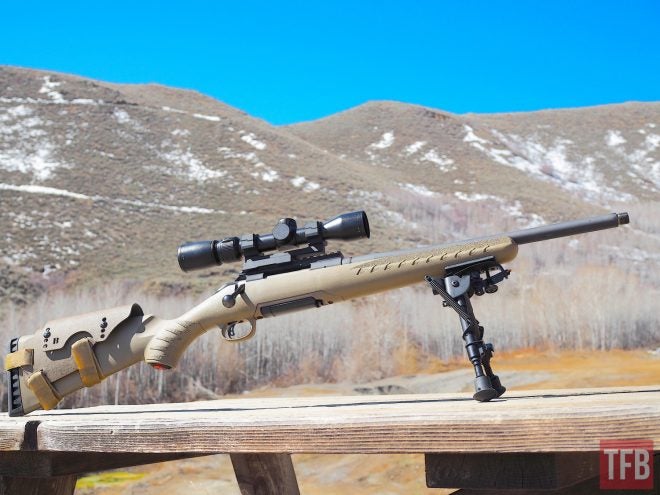The Ruger American Ranch Rifle (RARR) is a handy, affordable 16″ barrel bolt action that can be had in a number of chamberings. Weights range from 5.5-6lbs, depending on caliber, and though the default color scheme is a tan stock with a matte black receiver and barrel, a number of distributor-exclusive colors are available.
The Ruger “Ranch” moniker has some history, first being used in the early 1980s in relation to versions of the Ruger Mini-14 that had their receiver cut for scope rings. It was one of these models, in fact, that was my first rifle.
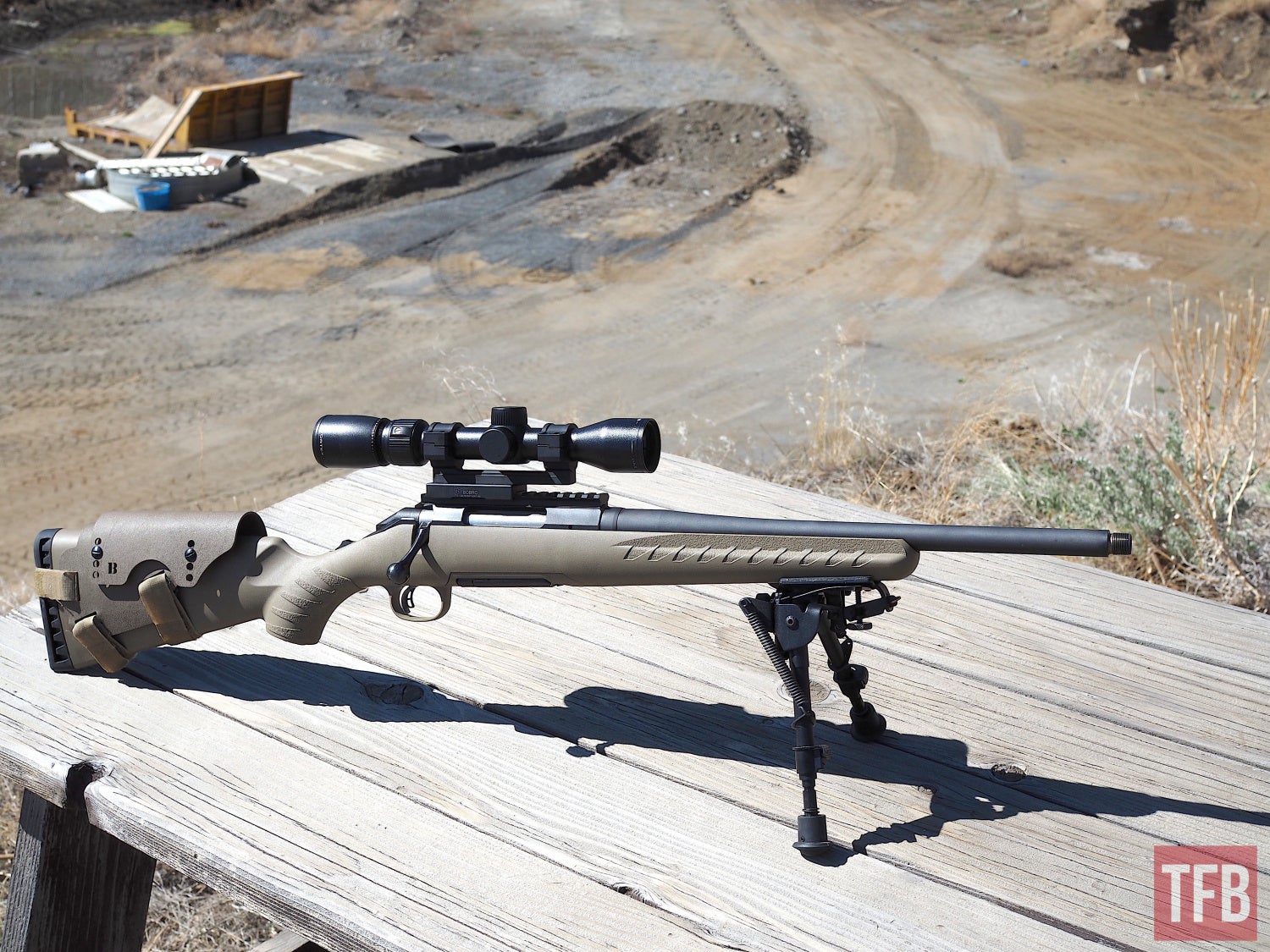
Ruger American Ranch Rifle
Current chamberings are 5.56, 6.5 Grendel, .300BLK, 7.62×39, .350 Legend, and .450 Bushmaster. Like all Ruger American rifles, they come with the Ruger Marksman 3-5lb adjustable trigger, and have the 3-lug, dual locking cam 70-degree centerfire bolt. They also feature a Picatinny rail scope base and have a block-bedded receiver and free-floated barrel. On paper, they represent a very good value for a bolt action rifle. This value is among the reasons why I picked up a .300 Blackout chambered, flush fit magazine RARR for well below MSRP. MSRP for all chamberings of the RARR is $549.
View Current Ruger American Ranch Rifle Models and Specs Here
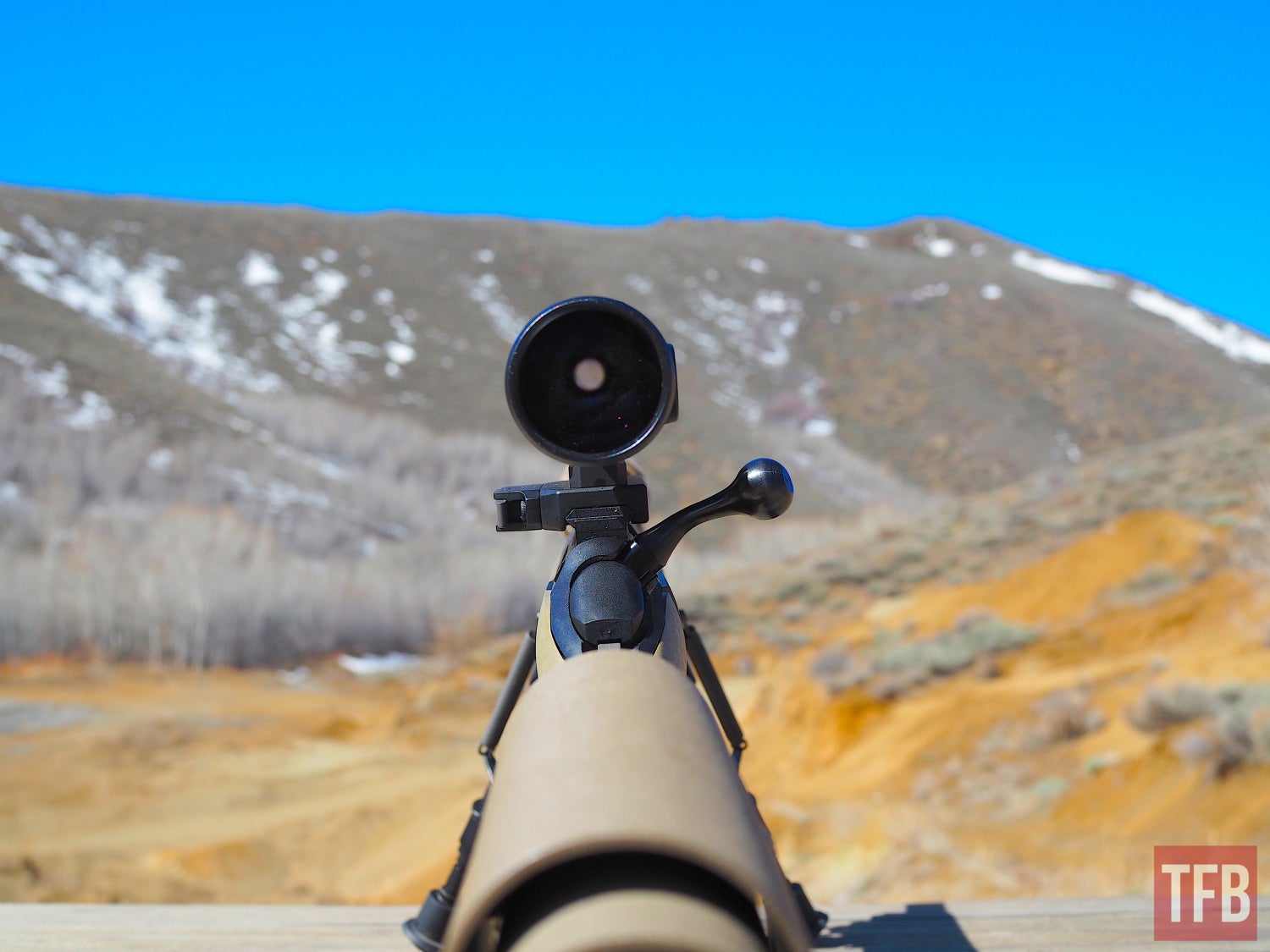
70-degree bolt throw

Bolt face
First Impressions
The Ruger American Ranch Rifle comes in a cardboard box, and comes adorned with easy to remove Ruger stickers that are intended to make the rifle stand out in a gun store rack. After getting rid of the stickers and inserting the bolt, I noted that this particular rifle did not seem to have any rough spots throughout the movement of the bolt in the receiver. Sure there were machine marks on the bolt and inside the receiver, but they are not detectable while moving the bolt. It’s no Sauer 404, but it’s smooth enough.
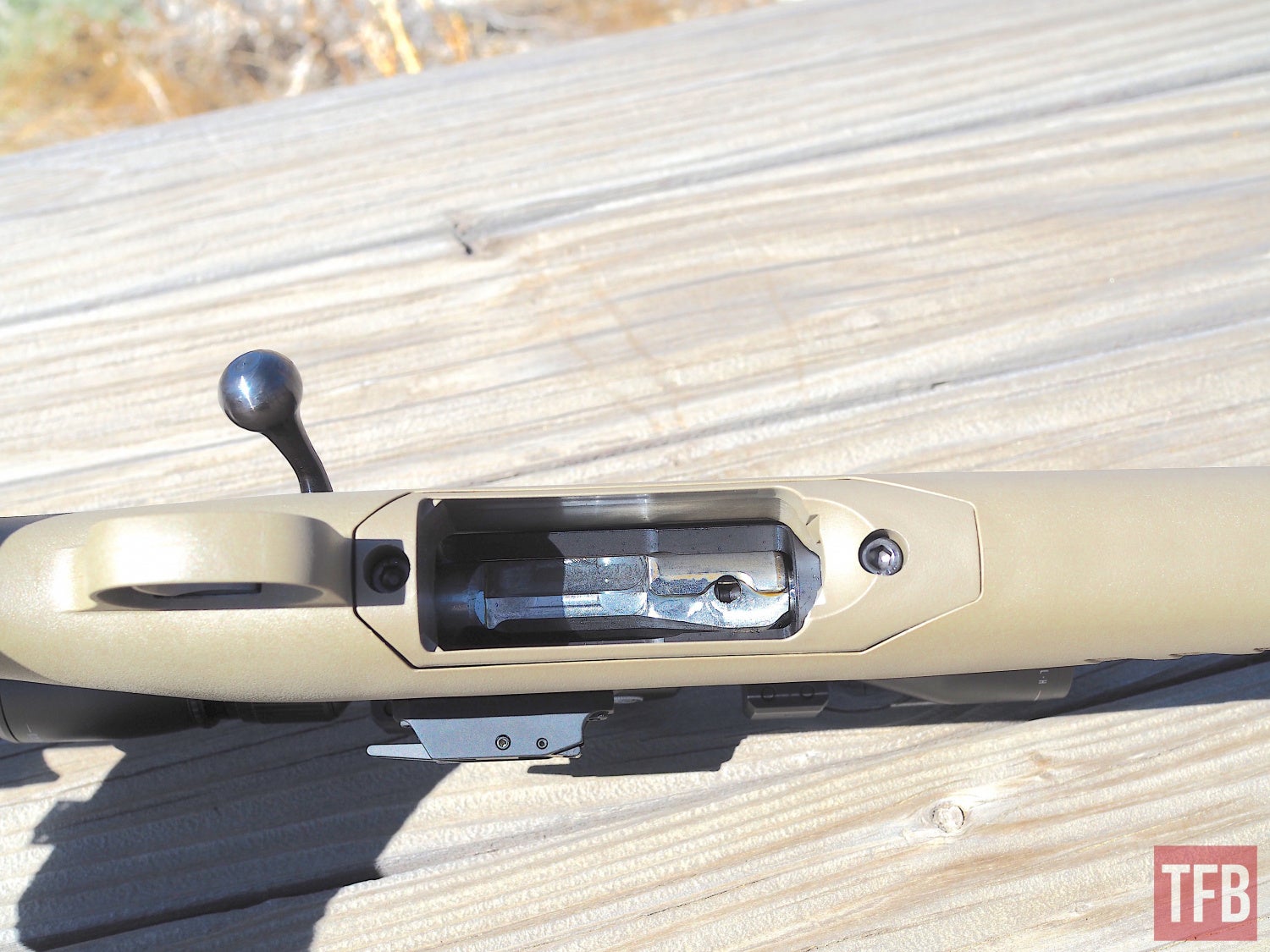
Underside of bolt
The matte black finish was uniform and well applied, and the thread protector nicely integrated with the rest of the barrel. The Ruger Marksman trigger came set at 3.5lbs from from factory. It’s an excellent trigger, and represents a massive improvement from the triggers most factory rifles in this price range had back when I started gunsmithing. The tang-mounted safety moved into both positions securely and with an appropriate level of pressure. Overall, there were no immediate issues apparent with the rifle on first impression. If I had to nit-pick, I would say that the polymer stock is a bit slick to hold on to, and a bit loud to handle.

On safe

Fire
Equipping it for the range
The Ruger American Ranch Rifle’s picatinny rail seems well made and is in-spec. I had no issues fitting any of the rings or one-piece mounts that I have for test/review scopes onto this rifle. I settled on a Bobro mount with a Vortex Razor HD LH 1.5-8x scope for testing purposes. The thread protector does have flats on the side, but I did not need them, and it threaded off smoothly with an appropriate amount of hand pressure.
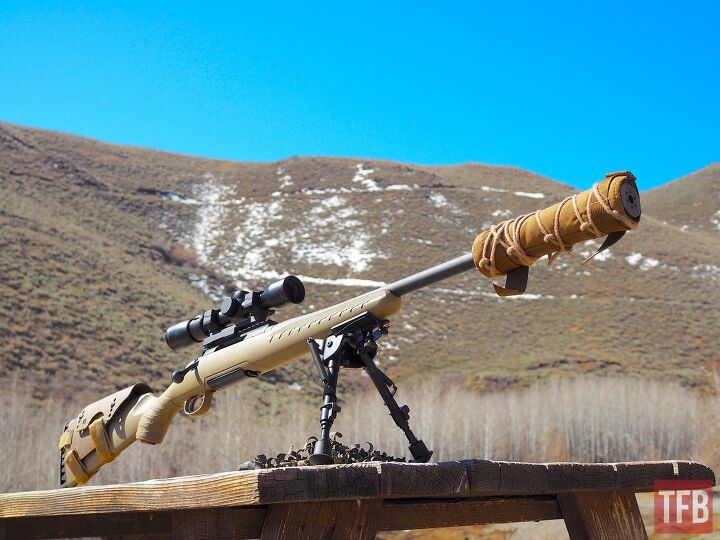
Ruger American Ranch Rifle
A .300BLK chambered firearm is just sad without a can, so I threw on my old 1st gen Gemtech Sandstorm. A Harris bipod thrown onto the front sling stud and a Bradley adjustable cheek riser completed the range-readiness of this little gun. Of course, the minimalist could just throw on a red dot or Nodak Spud’s iron sights and be good to go as well.
Ruger Ranch Rifle Range Results
I first took the Ruger American Ranch Rifle out to boresight and initially test in the forest. Carried in one of my frame packs, the RARR was handy and easy to pack around. Using S&B subsonic 200gr, I fired some initial groups at 50y braced off the pack. The exceedingly quiet (think snapping one’s fingers softly) 5 shot groups had all rounds touching in the center of a 1/2 size USPSA silhouette, a good start.
The soft rubber buttpad does an excellent job of recoil mitigation. I’ve had beginning shooters of all ages shoot this rifle, and all of them enjoyed the minimal recoil of the rifle. The excellent trigger was also enjoyed by all.
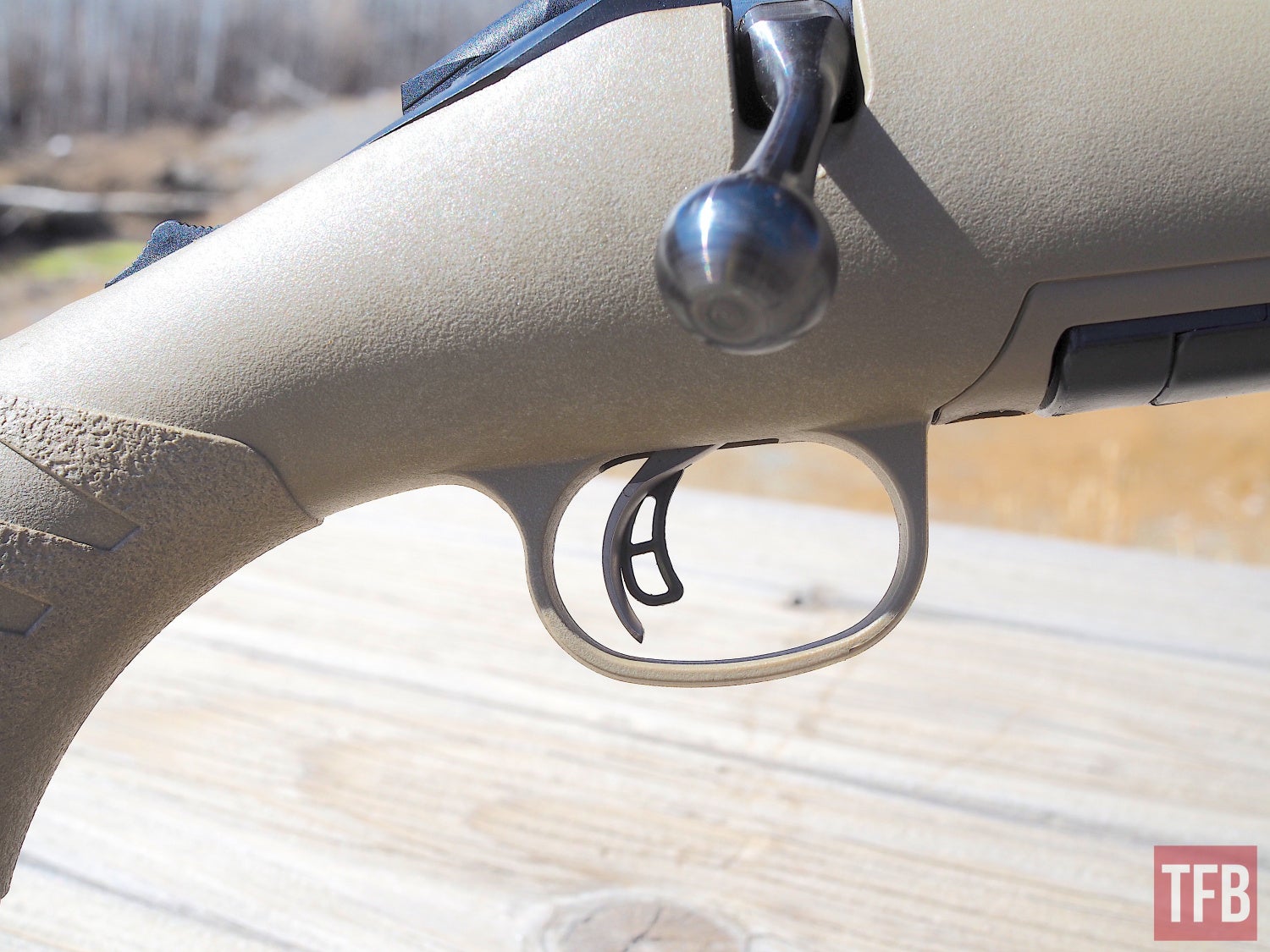
Ruger Marksman trigger
Later on, I took the RARR out to a longer range. The offset between supersonic and subsonic rounds was easy enough to figure out in the scope, and the RARR printed very accurate groups with all three loads of ammunition at 100y. Supersonic ammo averaged right around 3/4 MOA. Moving on to longer ranges, I was able to get repeatable hits on steel out to 400y, though the maximum range I would want to shoot medium game with a .300 BLK round would be about 300y.
Groups below, average of 5-shot groups measured in MOA center-center at 100y. Groups were fired seated, with bipod front and sandbag rear support.
- S&B 200gr Subsonic FMJ: 1.14
- Barnes VOR-TX 110gr Tipped BT: .7
- Remington 125gr Matchking: .8
While at the range, I noticed that while the report of the subsonic ammo was extremely quiet, cycling the bolt on this rifle is not. It is one of the louder bolts in its function. I would recommend having one already in the chamber if possible before you make your final approach on game. There just isn’t a good way to quietly chamber a round in this gun. On the good side of things, one can cycle the Ruger American Rifles bolt with the safety engaged.
Loading…
The plastic flush fit magazine is the one big negative on this rifle. Flimsy and made of thin plastic, the magazine also has the unfortunate aspect of being pressured downwards enough in the stock by the bolt that, if one only has one round in the magazine, it will misfeed. I had this happen numerous times with all three different loads. The only way to get it to load was to counteract the bolt pressure by pressing on the magazine floorplate with my support hand. I’ve also had negative experiences with other Ruger American flush fit magazines, including one that completely fell apart while firing a .450 Bushmaster model.

The weak point of the .300 BLK Ruger American Rifle was the magazine
Normally, I would advise potential buyers to avoid purchasing the flush fit magazine version, but Ruger has since discontinued this model, only offering the version that uses AR15 magazines at the time of the writing of this article. I can only surmise there’s probably a correlation between this issue and the fact that Ruger discontinued the model.
Other than the issue with the last round in the magazine, I have experienced zero other malfunctions with the rifle in over 200 rounds.
Overall Impressions
The Ruger American Ranch Rifle in .300BLK is a good value. Objectively, it is compact, accurate, has a light, crisp adjustable trigger, appropriate barrel length for caliber, and comes with a threaded barrel and Picatinny rail base from the factory. Subjectively, it would make for a great knockaround truck/tractor/4-wheeler gun, or a value-priced hunting rifle, especially for a new hunter. If you are in the market for a value-priced, yet accurate bolt action in any of its available calibers, give the Ruger American Ranch Rifle a look. Just be aware of the issue with the flush fit magazine versions.
Pros:
- Very accurate for the price
- Great trigger
- Threaded and with a scope base from the factory.
Cons:
-
Stock and bolt are a bit loud
- Factory flush fit magazine is unreliable
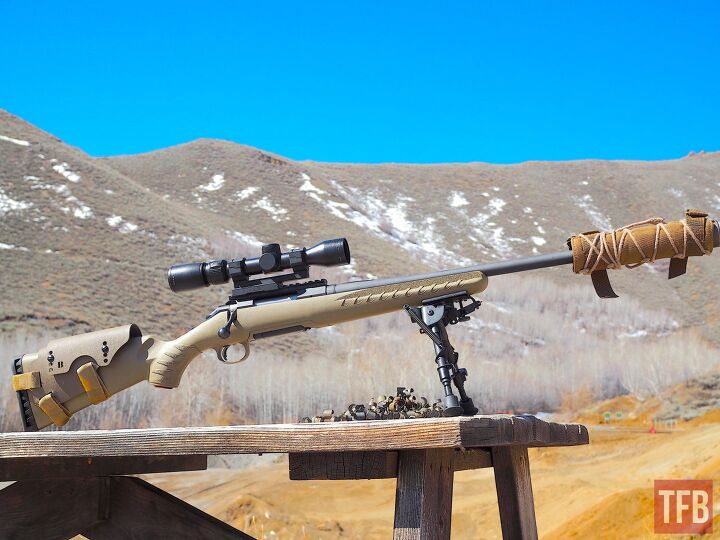
Ruger American Ranch Rifle
We are committed to finding, researching, and recommending the best products. We earn commissions from purchases you make using the retail links in our product reviews. Learn more about how this works.
 Your Privacy Choices
Your Privacy Choices
